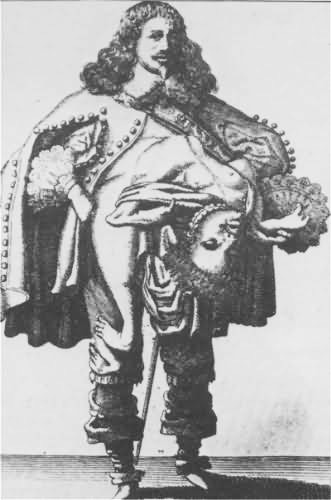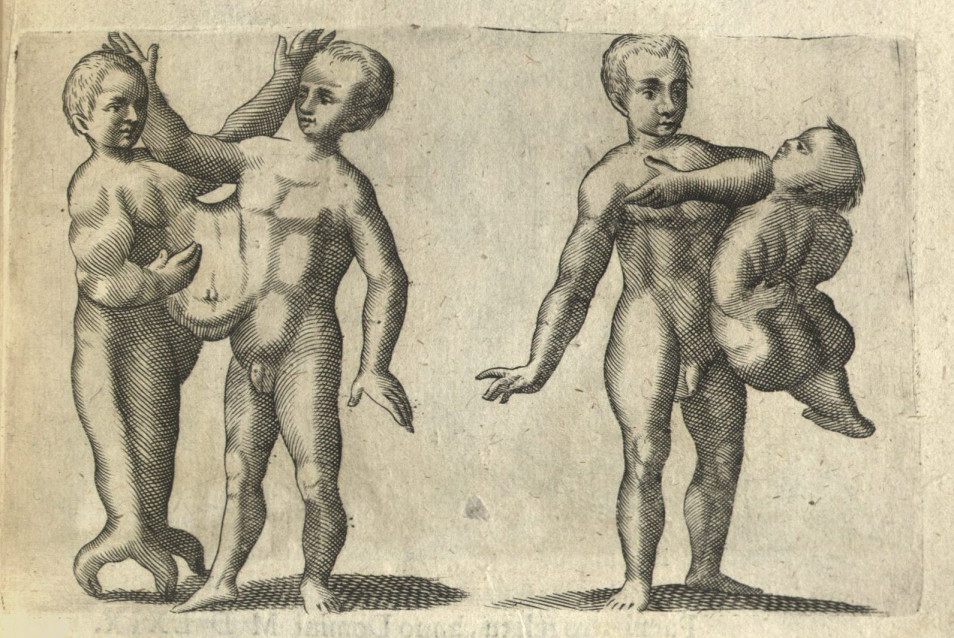Lazarus Colloredo and Joannes Baptista Colloredo were conjoined twins, born in Genoa, Italy in 1617. The upper body and left leg of Joannes Baptista, named after John the Baptist, stuck out of his brother, Lazarus. He did not speak, kept his eyes closed and mouth open all the time and was what is known as a parasitic twin. This condition occurs when an embryo begins to split, but does not complete the process. One sibling stops growing, resulting in a part of the twin surviving off the other.
Taunted and mocked from an early age, to earn a living, Lazarus exhibited himself all across Europe during his lifetime. The parasitic twins toured for more than a decade. As traveling spectacles go, the pair was somewhat unusual in that Lazarus was both the showman and the show.
Contemporary accounts described Lazarus as courteous, handsome and intelligent, whose deportment was always that of a gentleman. When Lazarus was not exhibiting himself, he covered his brother with his cloak to avoid unnecessary attention. He employed two assistants as well-dressed as himself, one of whom would sound a trumpet to indicate the start of the viewing, the other to collect money from spectators.

On tour he carried a portrait of both himself and his parasitic twin, which he would hang outside his lodgings as an advertisement. Accounts by anatomists and physicians who visited the brothers confirm John Baptista’s consciousness to have been very minimal. He hardly, if ever, opened his eyes, had faint breathing and could not speak. Due presumably to an inability to drain cerebral-spinal fluid, John Baptista’s head eventually grew twice as large as Lazarus’. His enormous head, gaping mouth and unkempt blond beard must have been an astonishing sight to spectators.
Besides the fascination inspired by the appearance and the contrast between Lazarus’ genteel affability and intelligence and his twin’s shapeless and speechless existence, the conjoined nature of the two raised a genuine legal question.
While in France, Lazarus was accosted by a drunken man, who grew abusive and violent. Lazarus defended himself, apparently by cracking a bottle of wine over the man’s head. The offended succumbed to his injuries and Lazarus was placed on trial for murder, a capital crime. Although a case of self-defense was raised, the court refused the petition. The dead man had no weapon and Lazarus used the bottle to strike him and a death sentence was pronounced. It was then that a greater question arose. If Lazarus was put to death, it would also execute his conjoined twin. This would result in the killing of an innocent man. Lazarus was able to produce the baptismal records dating to 1617 for himself and his brother. As one who was baptized, the court had to accept that John Baptista had a soul in the eyes of the Church and accepted the argument. Lazarus and John Baptista were freed. Later accounts claim that Lazarus married and had several children. The brothers’ exact date of death is unknown. They are last mentioned in 1646.





